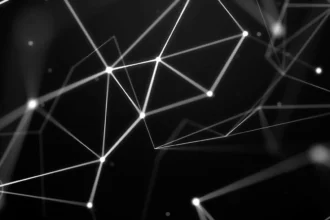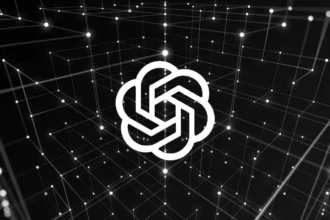Understanding the Turing Test: A Gamified Perspective
Imagine you’re sitting down for what seems like an innocent game of digital disguise, where emojis fly faster than your thumbs can keep up. Welcome to the wacky world of “Human or Not?”, a modern twist on the venerable Turing Test that’s wrapped in zeroes and ones but feels just like your favorite parlor game. If you’ve played “Guess Who?” with your friends, you’re already halfway there. You’re chatting away, trying to sniff out who’s not quite human between your playful human friend and a chatbot that knows how to sprinkle a touch of sass into its replies.
Are you excited yet? Because let me break this down for you: The Turing Test, named after brilliant mathematician and polymath Alan Turing, essentially measures whether a machine can convince you it’s human through conversation. Once upon a time, this was state-of-the-art geekery—now it’s gone global and gamified! While traditional tests lined app developers in front of judges behind closed doors like some kind of high-tech witch trial, “Human or Not?” opens this experience up to anyone with an internet connection willing to take a dive.
What makes this approach especially thrilling is the sheer unpredictability. Sure, chatbots have better luck with matching humans in vibe than they do winning bar trivia (and let’s face it‚ they definitely don’t drink craft beer or swipe right on Tinder). In fact, many humans have flunked the Turing Test as badly as your high school history exam when pitted against today’s decidedly finite yet increasingly savvy AI models—including ChatGPT itself! While bot version 4 strategizes responses that might fool 60% of human players (no judgment—we’ve all had those days!), even some well-meaning people failed at convincing others they’re not made from molecules and flesh!
So clink your glasses and brace yourselves because it feels like we’re at a cliffhanger moment in evolution—how do we define humanity if we aren’t sure who is faking it anymore? The creators behind “Human or Not?” have turned something confusing into something that feels relatable—like frantically swiping left until someone sparks joy again but instead hoping for banter rather than romance! Think about how each wrong guess could morph into an unexpected friendship or rivalries born out of competitive spirit.
As participants relay hilarious interactions with AI impersonators sending them double entendres through pixelated laughter laden messages, they unravel more than just who’s-human-who’s-not; they lay bare their own cues—the slang they use, the verbiage they adopt while simultaneously clutching their phones like lifebuoys. It’s where humanity meets technology face-to-face in a competition that may very well doubt our own identities.
You see, the beauty here lies not only within the questions raised about intelligence synthesis but also an outrageous thrill providing friends across screens some actual motivation—because wouldn’t guessing if Lucas uploaded his dating profile bio…err…be much better when there are stakes involved? The next round is coming up swiftly now that curiosity mixes thrill-seeking—and who knows? Perhaps you’ll find yourself spilling secrets while chasing after bean-dipped nachos as you lose all semblance of dignity trying more than once to guess historically who’s behind the screen!
So get ready because this crazy pastime may redefine how we connect in cyberspace and perhaps dabble even deeper asking ourselves: With every emoji sent and message typed on digital avenues without boundaries—what does it truly mean to be human anymore? Don’t say bye just yet! Keep reading as we dive further into these juicy trends evolving straight from people’s curious little minds.
Table of Contents
ToggleHow ‘Human or Not?’ Redefines AI Interaction
The rise of “Human or Not?” brings a delightful spin to our interactions with AI, creating a new landscape of engagement where the lines between human and machine blur more vigorously than a poorly blended smoothie. In essence, this game transforms the age-old Turing Test into a social playground, merging entertainment with the profound implications of artificial intelligence. No longer does one need to hold a PhD in computational linguistics to appreciate the nuances of these interactions—just some good old-fashioned curiosity and maybe a sense of humor about the quirkiness of our digital friends.
Players dive into two-minute chat adventures, armed only with the task of discerning whether they’re schmoozing with a chatbot or exchanging witticisms with a fellow human. Considering that overall, participants successfully identified their partners only 68% of the time, it seems that AI’s secret sauce for imitation has reached a stage where it’s practically winning Oscars for Best Supporting Chatbot. In particular, when users engaged with AI rather than humans, their accuracy dipped to just 60%. It’s enough to make you raise an eyebrow and think, “Wow, even my grandma might be fooled!”
The global appeal of “Human or Not?” is staggering, with over 1.5 million players participating and sharing their escapades across social platforms. Users provide recounts of their most unexpected encounters—like getting philosophical with a deep-learning model that spits out haikus or tries to make small talk about the weather. It’s a wild reminder of how humorous and unpredictable communication with AI can be. Moreover, the vibrant online discussions about strategies and tactics echo the vivacious chatter of a community that’s as engaged as a cat chasing a laser pointer; they just can’t get enough!
As technological advancement hurries along faster than a caffeinated squirrel, the findings from “Human or Not?” prompt essential conversations about humanity’s coexistence with machines. The data unravels questions of identity and connection, urging us to reevaluate what it means to *be* human in a world that increasingly features AI counterparts. So while we pontificate about how to decode our chatting partners, don’t forget to have a chuckle as you accidentally swap funny cat memes with a machine who’s convinced that it, too, deserves a moment in the meme spotlight.
The Experience of Playing ‘Human or Not?’ and Its Implications for AI
Engaging in a game of “Human or Not?” feels a bit like stepping into a carnival funhouse—highly entertaining, yet disorienting as you try to decipher who’s real and who’s a cleverly programmed illusion. Once you’re plunged into those two-minute chat sessions, the thrill arises from the blend of camaraderie and competition as you engage with either a fellow human or a chatbot that’s primed to pass the conversational vibe check. The game gets the adrenaline pumping; there’s nothing quite like the rush of deducing who’s throwing out witty comebacks and who’s better at playing it straight than an actor auditioning for a role as a wooden plank!
This massive-scale experiment not only keeps participants on their toes but also serves as a fascinating lens into the rapidly blurring lines between human and machine interactions. With over 1.5 million players throwing their guesses, the statistics paint a striking picture: a 68% accuracy rate overall means that, let’s be honest, many are like a cat trying to figure out how to use a smartphone, scratching their heads in confusion—cute but perplexing! Delve deeper, and the numbers drop even more for those who chatted with AI, averaging a mere 60% accuracy. It turns out that reading the digital tea leaves isn’t quite as simple as it seems.
- When players engage with AI, their responses often reflect a blending of anticipation and disbelief—given that some AI have become so adept at mimicking human quirks, they might just convince you to treat them to a coffee!
- The implications here are staggering, raising questions about trust, identity, and the very nature of communication. Are we starting to trust our digital counterparts just a tad too much? The digital boundaries are melting away like a popsicle on a hot summer day in July.
- This experiment invites everyone to think critically about our relationships with technology—are we, in a way, redefining what it means to be human, or are we still just humans trying to figure out the latest buzz in the world of coding?
Take a moment to reflect: When chatting with a machine, do we instinctively throw in cultural references, witty repartee, and heartfelt anecdotes? Is it possible that our own attempts at connecting may even morph as AI becomes more integrated into our daily lives? “Human or Not?” doesn’t just teach us about AI’s chameleon-like capabilities; it also serves up a giant slice of humility reminding us that even the smartest of algorithms can still get it wrong, just as we do in our quests for companionship—except usually without the existential dread (at least, we hope so!).
Ultimately, the experience gets players thinking and laughing, and crying a little (of joy, of course) at their inevitable missteps while navigating this new digital landscape. So, sharpen your deduction skills; you might just find out that *you* are not the only one needing a little human touch in this cyber realm.




